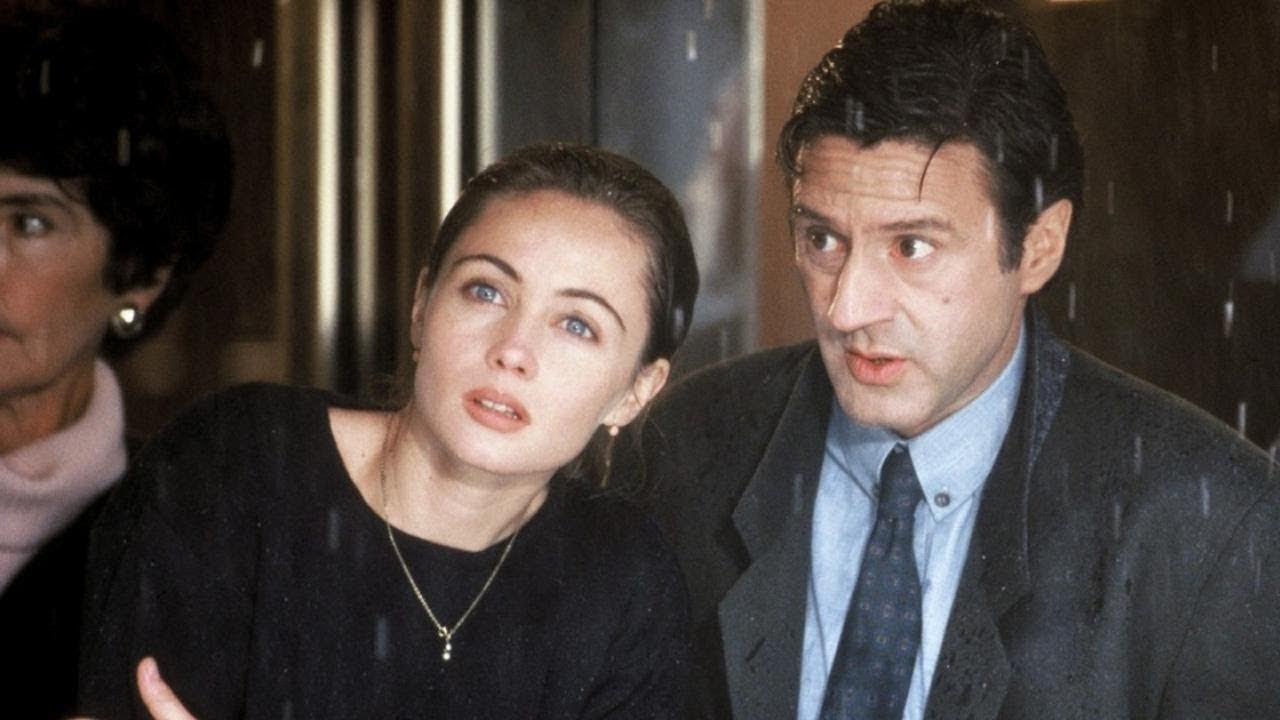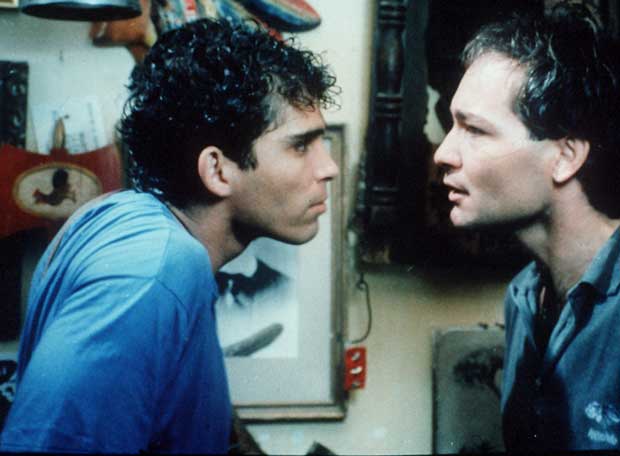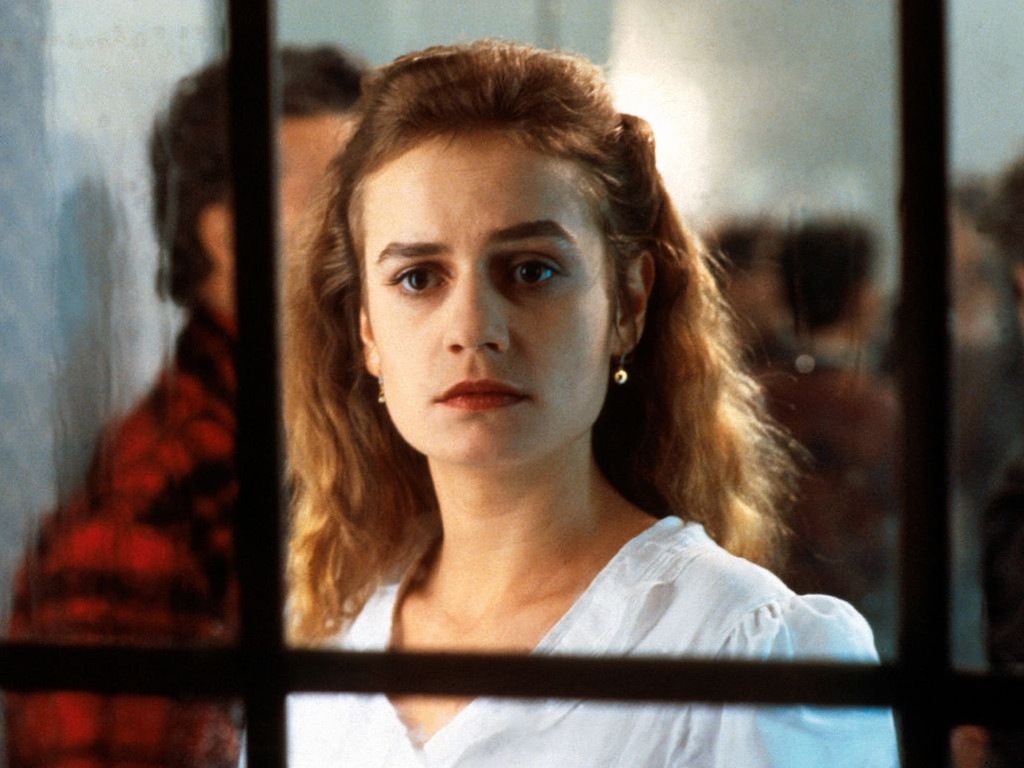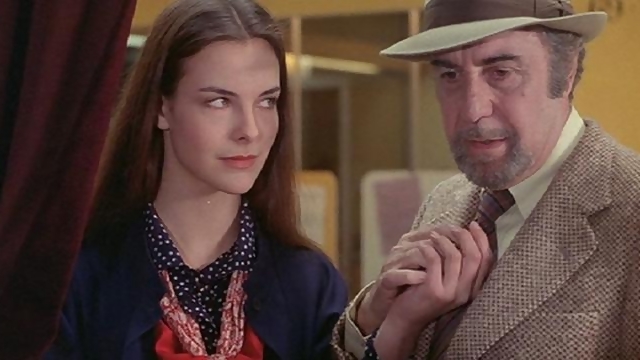5. A Heart in Winter (1992)

Following the progression of an unconventional erotic triangle, the steely backdrop of Claude Sautet’s “A Heart in Winter” leads to a climactic outcome that no one would expect. As Camille, a beautiful and talented violinist, appears in the intellectual lives of two male musicians, it seems that she’ll be the destabilizing parameter in their tranquil relationship. Instead, she was meant to be the one to tremble and seek reparation.
Maxime and Stéphane work on violins in the same laboratory, maintaining a stable partnership. Camille needs their professional help, while they both are fascinated by her classy charm and original beauty. Soon, Camille and Maxime became a couple. But her restless heart discovers a deeply oppressed erotic desire for Maxime’s aloof friend, Stéphane.
And there she is, honest about her feelings, glowing in her stunning appearance and fathomless music talent. But she finds herself completely unable to acquire him. Of course, Stéphane admires her mystique. However, he can’t offer her what she seeks. Camille’s love turns into an undimmed obsession, reflected in a series of paranoiac acts. Her music notes rise from her violin in a delirious wandering of her sharp desire.
The bothersome sentimentalism of “A Heart in Winter” describes a quite tricky yet practicable reality. Defining a foggy locus across the typical escapist portrayal of romantic situations, this story comprehends the adversities of love. The eternal erotic game has no rules. Sometimes, the unconditional chase of the most desired person of your heart is pointless, and no words could ever articulate the proper sentence to ease the pain.
4. The Skin I Live In (2011)

Many thriller films focus on mad killers and abductors, whose insane behavior is later resurfacing on a complex background of tragedies and traumas. In his 2011 “The Skin I Live In,” Pedro Almodóvar delineates the portrait of a perverted scientist, using the same materials, textures, and colors as always. Deep in its substance, the film is synthesized by Almodóvar’s usual concerns, needs and truths. There’s just one notable difference: his protagonist in this case isn’t just another man that you meet in the street.
He’s hurt and lonely. Robert’s deepest wound was carved by a fire — not surprisingly, since Almodóvar’s favorite color is red and he’s exhibited a quite unique cinematic use of ashes in the past. In a vast luxurious residence, Robert keeps imprisoned a woman, on whom he has implemented numerous plastic surgeries in order to create a flawless and fireproof appearance. Elena is a plastic sexual toy in his hands, wishing to regain her freedom by seducing him.
Of course, an Almodóvar movie couldn’t lack in the presence of a consistent female figure, or of someone dressed in an animal costume. Nevertheless, the main character isn’t defined by the humane weaknesses as usual, and that’s why the plot twist won’t allow a psychological purification here.
Haunted by his wife’s burned figure, Robert has developed one chilling obsession: to recreate the disgraced beauty that was lost under his wife’s deformed skin and take complete control of it. His lunacy, still, stole even the last nugget of life from his numb mind.
3. Like Water for Chocolate (1992)

Why do we adopt habits? Why do we need them? Apart from describing the impact of common bottled-up feeling on regular — sometimes creative and sometimes destructive — behaviors, the Mexican film “Like Water for Chocolate” refers to the sparkling ingredient of unfulfilled love in an allegorical way, as it touches every surface of life.
Mexico, 1910: Tita can’t choose her life’s destination. As the youngest daughter of her family, she’s obliged to sacrifice her future for the sake of her mother’s care. Her darling, Pedro, is destined for her older sister. Tita’s grief gives its place to a conflicting feeling of melancholy and delight when Pedro confesses his vibrant love.
In order to soothe her unsatisfied desires, Tita concentrates her forces on cooking. Her foods taste and smell magical. Her secret recipes, apart from spices and herbs, contain the invigorating constituent of Tita’s abyssal love and non-experienced erotic moments. An unsatisfied heart and an untouched body never forget. Elaborating on an aspect of unfulfilled romance, the imaginative landscape of “Like Water for Chocolate” is sensational, torturously vivid, and effortlessly dreamy.
2. Monsieur Hire (1989)

Silent, pale, and covered by one thousand veils of misery, Monsieur Hire is one of those insignificant and unimpressive men who just survive every grey day of their lives in a grim apartment, somewhere in an impersonal urban building. His window’s shiny opening provides him a shred of joy, as it sheds some sunbeams on the life of a young female neighbor. The obsession with Alice’s unapproachable being is his unique leakage from a suffocating nothingness.
Watching her lying, stripping, dressing, and meeting her boyfriend, Monsieur Hire perceives himself as a transparent part of Alice’s life, seeking nothing more than that. Alice, on the other hand, has been aware of his staring eyes. Perhaps, she’s naively fascinated by her presence’s influence on a stranger’s days.
One night, Monsieur Hire witnesses a suspicious involvement. Alice observes his window. She knows that he knows. That shared secret could be a serious problem, but still, it could be a weapon in the young girl’s hands. Appearing as the perfect scapegoat, Monsieur Hire is invited on a date with Alice. As she for waits him on a terrace, he approaches her emerging figure from the back, unaware of his bleak fate. Waiting for his execution, the misfortune man believed in his brief dive into a volatile dream.
1. That Obscure Object of Desire (1977)

Capturing a wiry stinging feeling that was previously projected on Jean-Luc Godard’s 1963 “Contempt,” and later given through a nightmare in David Lynch’s 1997 “Lost Highway,” the surreal sentimental ordeal described in Luis Buñuel’s “That Obscure Object of Desire” is a subliminal recording of the unfulfilled love’s imprint.
Mathieu is the tragic beholder of both the passion and the crucible of this hypnotizing story. His beloved woman is a young, beautiful, and elusive ghost of his mind. When he comes close, she becomes transparent. When he walks away, she appears in the most intense and desirable form.
What does she want? What does she strive to achieve? These questions burn Mathieu’s mind, as he observes his object of desire changing identities and moods. Alternating his genuine erotic appetites with his uncontrollable feelings of lust, he’s just a man completely stripped in the hands of his overpowering master.
This film, another masterful intellectual portrayal envisioned and crafted by Buñuel’s divine eyes and hands, could be a real nightmare. Its dystopian sentimental setting describes the weakened mind of a man who fails to reach his object of desire. The more wanted a creature is, the more obscure it accomplished to appear. Obscurity supplies a hearts lust, whereas clarity fades out a trance’s shades.